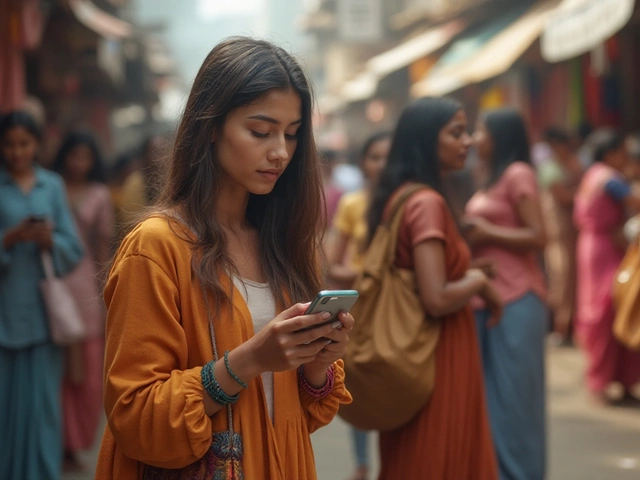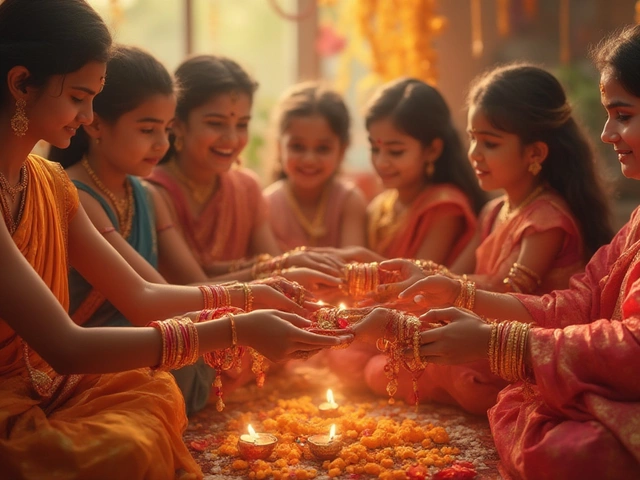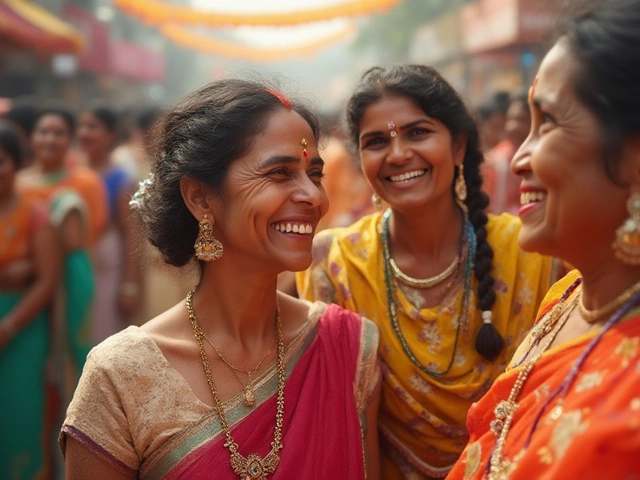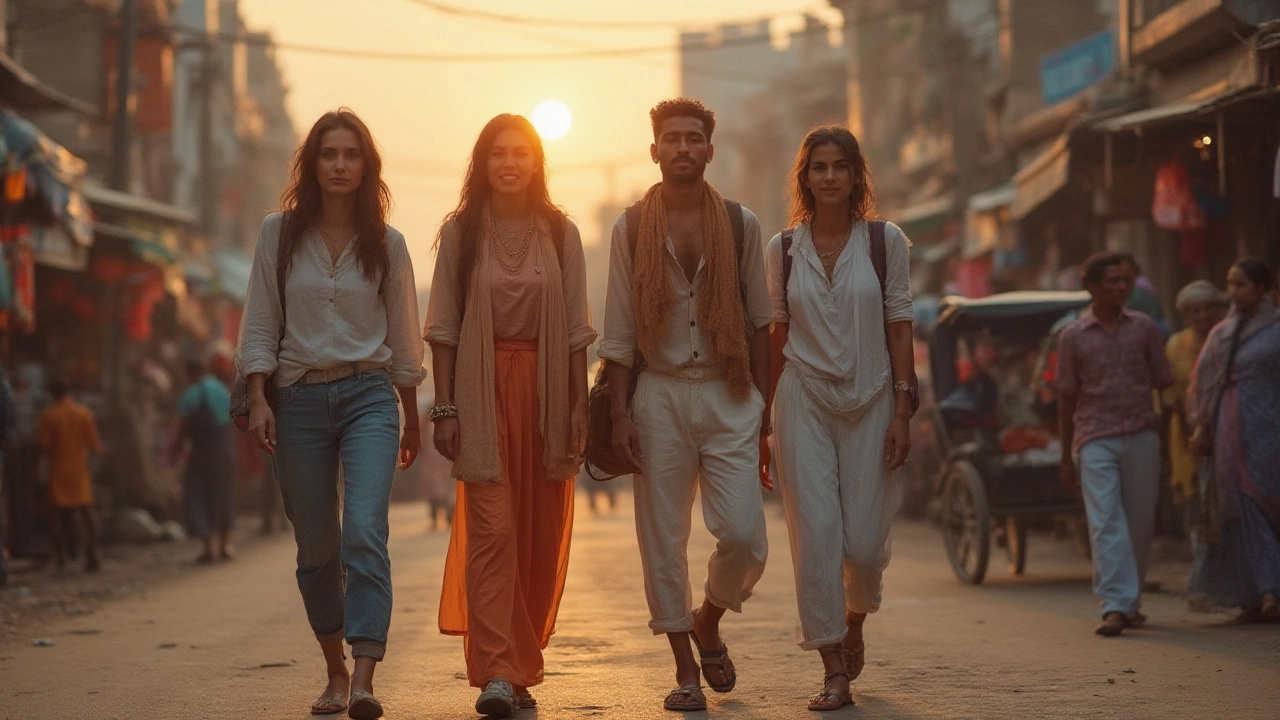
Stepping off a long flight into India, the mix of color, noise, and 90-degree heat hits you before your bags even appear. The first thing most Americans wrestle with isn’t which temple to see or how to spot the best chai—it's what to wear. It matters a lot more than you'd expect, and what’s totally fine in Los Angeles or New York could feel way out of place in Delhi or Mumbai. Surprise: shorts are the rarest sight, and even in the sweltering south, you’ll barely see locals baring their knees. A small wardrobe choice can shape your entire experience, from daily comfort to how you’re treated in markets or greeted by locals. Ready to figure out the art of dressing right on the other side of the world?
The Realities of Indian Dress Codes
India truly is a universe inside a country. Urban cities, rural towns, sacred sites, monsoon chaos, and stretches of blazing sun—each brings its own rules on what works and what absolutely doesn’t. Forget the stereotype that everyone wears sarees or kurtas: yes, those are common, but Western clothing has a big presence, especially among younger urban Indians. Still, there’s an unspoken line between what locals wear and what foreigners can get away with. For Americans, blending comfort, modesty, and practicality is key.
Culturally, India leans towards modest clothing, regardless of the region. You’ll notice that most men wear full-length trousers or jeans, rarely shorts. Shirts, light polos, and button-downs are staples. Women often prefer long skirts, salwar kameez, or full-length leggings, even in the heat. Sleeveless tops or anything low-cut are rare, especially outside cosmopolitan hubs like Mumbai. But it isn’t just about tradition—modesty means respect for local culture. Foreigners dressing in skimpy or super casual outfits can attract long stares, unwanted attention, or just plain awkwardness in daily life. If you’re on a work trip, it’s even more important: offices in India tend toward business casual, nothing too flashy, and no open toes for men in formal settings.
There’s also a practical side to the dress code. Religious sites—temples, mosques, churches—often have strict rules. Shoulders and knees must be covered, and sometimes you’ll need to remove shoes (next to a pile of hundreds outside). Carry a scarf or lightweight shawl for quick coverage, especially if you plan to visit places like the Taj Mahal, the Golden Temple in Amritsar, or Varanasi’s ghats (riverfronts). And don’t be surprised if people politely but openly point it out if you miss a dress code—locals see it as helpful, not rude.
Looking at some real-world numbers: a 2023 Pew Research Center survey found 78% of Indians agreed that “women should dress modestly in public” and 58% extended that belief to men as well. In tourist-heavy regions like Goa or Pondicherry, there’s looser enforcement (think beach shorts and tank tops), but in old cities like Varanasi or Jaipur, stick to the traditional guidelines.
Comfort, Weather, and How Not to Roast
You might think dressing modestly means stifling heat and bucketloads of sweat, but Indians have had hundreds of years to figure out how to fight the weather. Let’s break it down by season and region.
India is hot—sometimes eye-poppingly so. Summer (April to June) has temps soaring past 104°F (40°C) in much of the country. The monsoon (June to September) brings sticky humidity and daily downpours, while winter (November to February) can be surprisingly chilly in the north, especially in Delhi or the Himalayas. No matter the time of year, loose-fitting, light, and breathable fabrics are non-negotiable. Cotton, linen, and moisture-wicking synthetics are your best friends—especially when compared to heavy jeans or dark slim-fit shirts that trap the heat.
Here’s a cheat sheet for weather-smart clothing in India:
- Summer (April–June): Lightweight cotton pants, capris (for women), long skirts, loose shirts, and tunics. Skip jeans—too hot, slow to dry. Go for light colors, wide-brim hats, and UV sunglasses.
- Monsoon (June–Sept): Quick-dry synthetics, waterproof sandals (Crocs, floaters), and a small umbrella. Inevitably, you’ll get caught in the rain. Denim just doesn’t dry, and wet shoes go moldy fast.
- Winter (Nov–Feb): Layering is vital up north. Pack a fleece, lightweight jacket, and a scarf—yes, really. In Kolkata or Chennai, you’ll still need mostly summer wear, just throw in a sweater for evenings.
Air conditioning is another curveball. It can feel arctic in restaurants, malls, or offices, so bring a light pullover or shawl even in 90°F heat. Street markets and public transport, on the flip side, rarely offer AC. Washable and quick-dry clothing matters—a wash-and-dry cycle can turn into a daily ritual with dust and urban grime.
Have a look at the table below for the average temperatures by season in key Indian cities, so you can pack, not guess:
| City | Summer Avg (°F) | Monsoon Avg (°F) | Winter Avg (°F) |
|---|---|---|---|
| Delhi | 93–106 | 86–95 | 46–68 |
| Mumbai | 86–95 | 77–86 | 61–86 |
| Bangalore | 79–91 | 66–84 | 57–84 |
| Kolkata | 84–100 | 80–91 | 55–79 |
| Chennai | 84–102 | 77–93 | 67–84 |
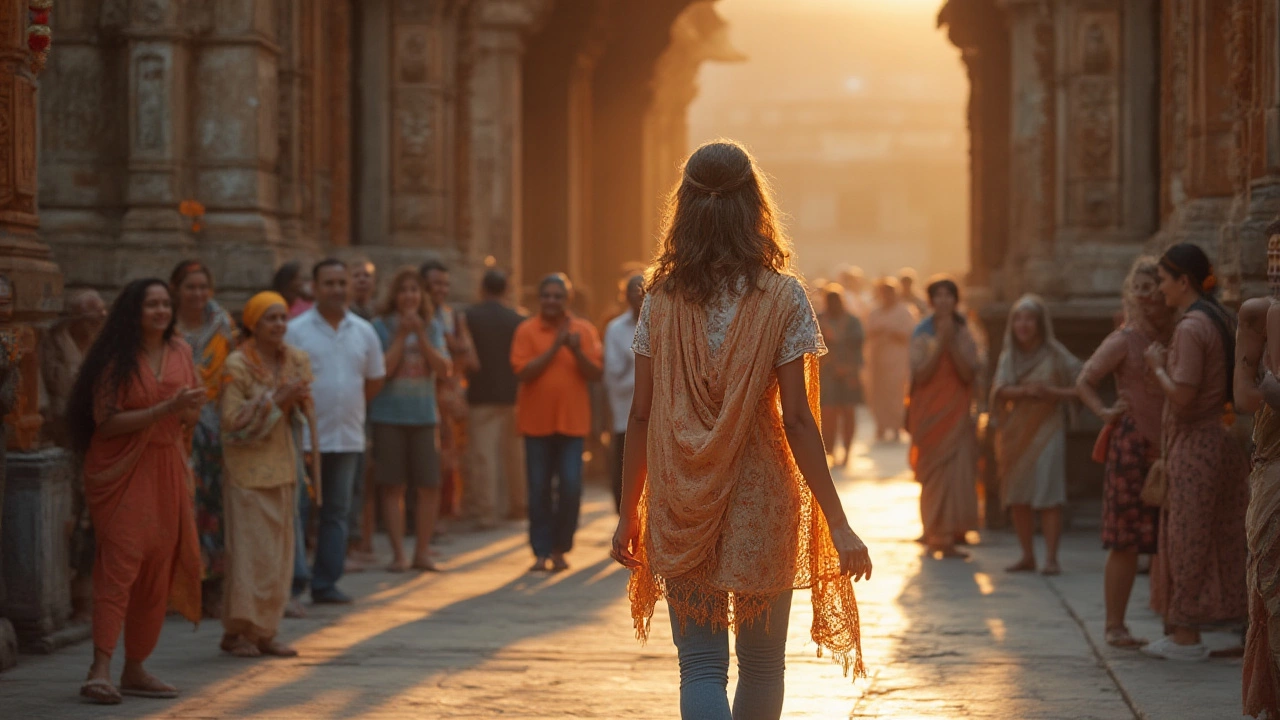
Blending In: Cultural Sensitivity and Local Fashion
If you want to stand out less (or simply not get treated like a walking selfie-magnet), a few small tweaks make all the difference. Indians notice effort and respect for their traditions: it isn’t about pretending to be local, but about meeting them halfway.
Go for casual, yet neat. Collared shirts, clean t-shirts, and modest tops work for both genders. For guys, ditch tanks and sleeveless tees off the beach. Knee-length shorts are fine on the coast or at upscale gyms, but in most cities, stick with trousers or chinos. Women get more leeway in metro cities—leggings, maxi skirts, and loose tunics are everywhere in Mumbai, but in smaller towns, longer hemlines and covered shoulders still work best. A little-known tip: Indian-made kurtas are everywhere, cost very little, and are incredibly comfy in the heat. Tons of travelers pick up kurtas on day one and wonder why they bothered bringing anything else!
Footwear has its quirks. Most homes, temples, and even some small shops require shoes off at the door. Slip-on sandals (the kind you can kick off in a second) are the way to go. High heels and hiking boots work only for very specific settings—think clubs or trekking, not day-to-day stuff. Crossbody bags and secure backpacks keep hands free and valuables close; theft is rare but crowded spaces get tight quickly.
Check clothing labels before you pack: Many Western brands sell in India, but US-style sizing differs, and local cuts are slimmer. Shopping smart locally can save you from showing up looking out of place, and you get handy souvenirs at the same time. Also, laundry services are cheap, with “press and wash” shops popping up in every neighborhood—don’t overpack. Ever wonder why you see so many men and women in crisp, wrinkle-free outfits? That’s professional ironing, and it costs less than your morning coffee in India!
The fastest way to offend: showing too much skin at religious sites, full camouflage gear in cities (folks may suspect you're military), or mock traditional wear in beer bars. On the flip side, locals love it when foreigners try Indian clothes for festivals or weddings—it’s a way to join in, not a costume party.
Must-Have Wardrobe Basics for Americans in India
If you’re staring at your open suitcase, overwhelmed—don’t worry. You don’t need an expensive shopping spree or to reinvent your style. A mix of the right couple of Western basics, a few Indian pieces, and thoughtful layers will carry you anywhere from ancient forts to high-tech malls. Here’s a starter packing list:
- 2-3 lightweight cotton or linen shirts (long and short sleeve)
- 2-3 pairs of loose pants or chinos (jeans for winter only)
- 1-2 long skirts or maxi dresses (for women)
- 1-2 pairs of leggings or capris (optional for women)
- 1-2 kurtas, easily bought in India
- Light sweater/fleece for AC or winter
- Shawl or large scarf (unisex, multipurpose)
- Rain jacket or umbrella (monsoon season)
- Sun hat or cap
- Non-leather, slip-on sandals and/or breathable sneakers
- Crossbody bag or daypack with zipper
One surprising detail: you can wear almost all colors. Black absorbs heat but isn’t frowned upon, while white is both stylish and considered auspicious. Bright colors are celebrated in festivals—don't be afraid to pick something vibrant if you like it. Just avoid military prints or any gear with flags (it gives the wrong signal).
Here’s a quick table of what to wear (and avoid) based on the setting:
| Setting | Recommended | To Avoid |
|---|---|---|
| Temple/Religious Site | Covered shoulders and knees, shawls, closed footwear | Shorts, tank tops, tight clothes |
| Office/Business Meeting | Button-downs, chinos, flats/closed-toe shoes | Jeans, sandals, loud graphics |
| Casual Outing | Kurta, cotton shirt, sandals | Graphic tees, very short skirts, sleeveless tops (except big cities) |
And don’t forget toiletries geared for the climate: sunscreen (SPF 50+), mosquito repellent, hand sanitizer (public restrooms can be, well, rustic), and laundry detergent packets for sink washes.
Your style will shape your trip in ways you probably don’t expect. The right wardrobe will help you get smiles instead of stares, party invites instead of puzzled looks, and, let’s be real, a lot more comfort for that mad dash for a train or last-minute market spree. So, pack smart, stay curious, and maybe swap those shorts for a breezy kurta—you won’t regret it.
